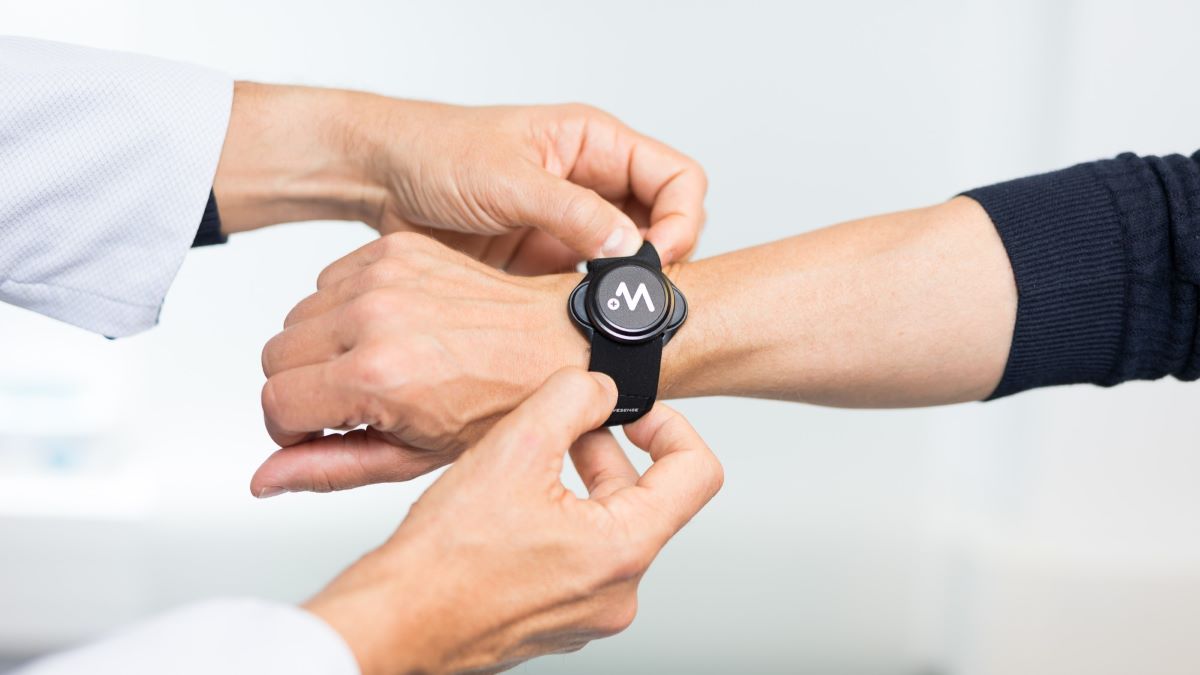Innovation Enabled: Movesense Medical Empowers the Development of Enhanced Telehealth Services

When and how will telehealth, remote patient monitoring and other digital health solutions make a significant impact on healthcare delivery? How will solutions using the Movesense Medical sensor accelerate this change?
Healthcare systems worldwide are experiencing growing pressure every year. The shortage of educated medical personnel, the overload of those at work, and the growing number of patients with chronic health conditions is a difficult equation. Spending more money is not a viable solution, because in many countries the healthcare system is already partly financed by debt.
To overcome the challenge, the healthcare industry needs new operating models. Investing in preventive measures and transferring responsibility for one’s own health and treatment to the patients themselves are necessary measures to get the situation under control.
Digital health has long been proposed as a tool to fix the situation. However, its implementation has been inconsistent and slower than needed for a major positive impact.
The use of digital health applications has expanded slower than expected for several reasons. The incompatibility and rigidity of different patient data systems and the lack of universal electronic health records are a clear barrier. There is also inertia in changing the traditional, proven operating methods of the healthcare system. Such a paradigm shift requires a lot of reforms both in practical operation and in the way of thinking, both at the level of individuals and the entire system.
Telehealth and Wearable Sensors Increase Healthcare Output
Some healthcare providers, especially in the public sector, emphasize the quality of care and the effective treatment of difficult health conditions as a measure of their success regardless of the cost. However, there’s another important factor in the equation that should not be forgotten: quantity.
The more people who get help for their health concerns before they become serious, the better their quality of life, the less need for high-end treatments, and the lower the costs of their care.
The total output of the healthcare system should be regarded as the product of quality and quantity. To reach the best productivity, this end result should be maximized with the available resources.
Telehealth and remote patient monitoring are essential tools for improving the productivity of healthcare. They help to extend good care evenly to different locations, enable the optimization of the care personnel deployment and save enormous amounts of time for both the staff and the patients. Thanks to the saving of patients’ time and travel costs and better work ability, the productivity improvements brought about by telehealth reach much wider in society than just healthcare.
At its simplest, telehealth can be a phone call or video chat between a patient and a doctor. However, modern wearable medical sensors, which are easy enough for the patient to use independently, can bring a significant additional benefit to remote patient care.
Remote patient monitoring enables continuous tracking of the patient’s condition at home, help the patients to take care of their own health during the treatment process, for example, in rehabilitation, and generally provide the doctor with information that helps optimize the patient’s treatment without a physical appointment.
This is where Movesense sensors come into play. Movesense Medical sensor and the associated open API’s and developer tools are an important piece of the solution to this complex healthcare puzzle.
Movesense Sensor Data Complements Telehealth Solutions
Movesense Medical is a wearable ECG, HRV, and movement sensor. It is small and light enough to be unobtrusively worn 24/7 for reliable assessment of cardiac and movement related parameters. Its single lead ECG measurement is proven to provide highly accurate data for cardiac rhythm analysis even during intense movement. Shock and water resistant, it is not afraid of any daily life situations such as shower or swimming.
As far as we know, Movesense Medical is also the only chest-worn wearable heart rate sensor on the market that is certified as a medical device conforming to the EU MDR regulation.
Movesense Medical also provides accurate 9-axis movement data that can be used for assessing daily activity, detecting specific events such as steps, stand-ups and movement-related symptoms, quantifying particular exercises, and for collecting many other parameters that doctors and digital health solutions need to optimize the patient’s care.
Movesense Medical sensor is made in Finland and available in mass production for OEM labeling. The sensor’s firmware can be customized for special use cases with open Movesense developer tools and sample code. The open API’s and software libraries allow straightforward integration of the sensor into existing health applications and systems. Movesense also provides technical support and consultation for integration and firmware customization.
The sensor connects wirelessly to a mobile phone or another host device, as specified in each solution. Its internal memory allows also operation autonomously without a wireless connection in certain use cases.
If you are interested in using Movesense Medical to improve your telehealth and remote patient monitoring solutions, don’t hesitate to get in touch with our experts right away!
